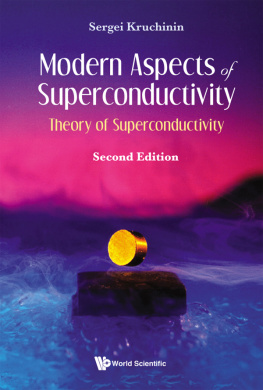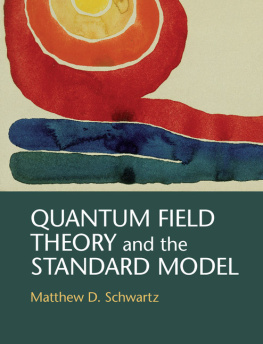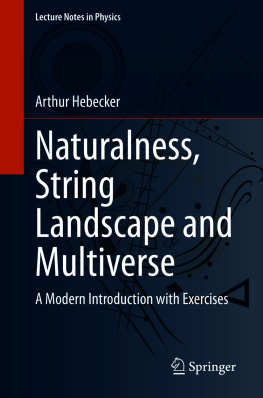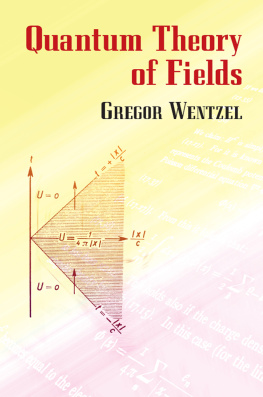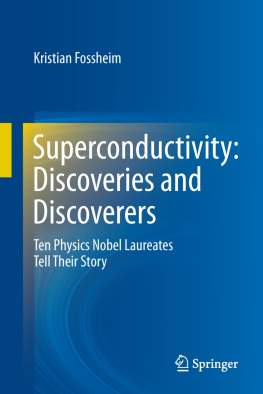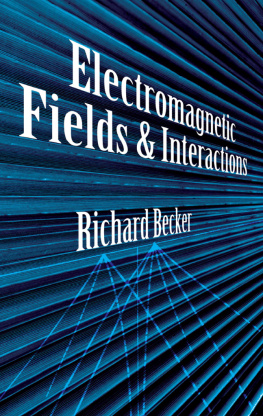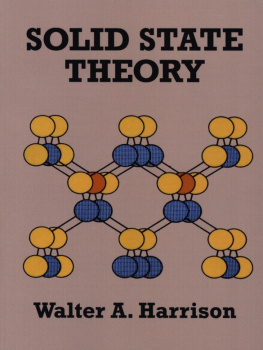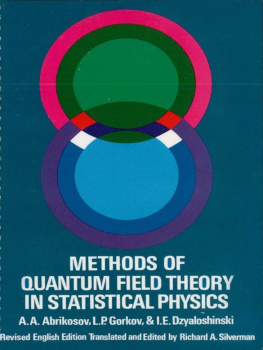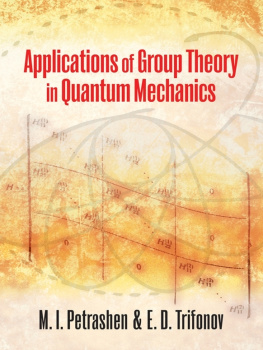Contents
Pagebreaks of the print version

Modern Aspects of Superconductivity
Theory of Superconductivity
Second Edition


Sergei Kruchinin
Bogolyubov Institute for Theoretical Physics, Kyiv, Ukraine

Published by
World Scientific Publishing Co. Pte. Ltd.
5 Toh Tuck Link, Singapore 596224
USA office: 27 Warren Street, Suite 401-402, Hackensack, NJ 07601
UK office: 57 Shelton Street, Covent Garden, London WC2H 9HE
British Library Cataloguing-in-Publication Data
A catalogue record for this book is available from the British Library.
MODERN ASPECTS OF SUPERCONDUCTIVITY
Theory of Superconductivity
Second Edition
Copyright 2021 by World Scientific Publishing Co. Pte. Ltd.
All rights reserved. This book, or parts thereof, may not be reproduced in any form or by any means, electronic or mechanical, including photocopying, recording or any information storage and retrieval system now known or to be invented, without written permission from the publisher.
For photocopying of material in this volume, please pay a copying fee through the Copyright Clearance Center, Inc., 222 Rosewood Drive, Danvers, MA 01923, USA. In this case permission to photocopy is not required from the publisher.
ISBN 978-981-123-451-4 (hardcover)
ISBN 978-981-123-452-1 (ebook for institutions)
ISBN 978-981-123-453-8 (ebook for individuals)
For any available supplementary material, please visit
https://www.worldscientific.com/worldscibooks/10.1142/12215#t=suppl
Desk Editor: Rhaimie Wahap
Typeset by Stallion Press
Email:
Printed in Singapore
The single reason for our inability to treat the problems of superconductivity consists in the absence of a sufficient imagination.
Richard P. Feynman
Preface
The study in the field of superconductivity theory is one of the most bright, fruitful, and promising trends in the theoretical physics of condensed matter, since superconductivity remains to be one of the most interesting research areas in physics.
The goal of the book is to give representation of certain modern aspects of superconductivity. We discuss such important aspects of the theory of superconductivity as the nature of high-Tc superconductivity, two-gap superconductivity, room-temperature superconductivity, mesoscopic superconductivity, the pairing state and the mechanism of cuprate high-Tc superconductivity.
We will consider also the up-to-date state of the problem of real construction of a quantum computer on the base of superconducting units.
In Chapter 1, we consider the field-theoretic method of superconductivity and discuss the basic idea of superconductivity and the elaboration of the GinzburgLandau and BCS theories in the frame of many-particle quantum field theory.
In Chapter 2, we consider such topics of high-Tc superconductivity as the structures of high-Tc superconductors, phase diagrams, and the problem of pseudogaps and analyze the mechanisms of superconductivity. We present general arguments as for the pairing symmetry in cuprate superconductors and investigate their thermodynamical properties within the spin-uctuation mechanism of superconductivity, by using the method of functional integrals.
In Chapter 3, we consider the new class of high-temperature superconductors such as Fe-based laminar compounds. We analyze the physical properties and electron models of Fe-based high-temperature superconductors. The particular interest in them is explained be perspectives of their practical application. In the chapter, we give the complete pattern of the formation of their physical properties within theoretical models on the basis of their electron structure.
Chapter 4 concentrates on the two-band and multiband superconductivity. We consider the physical properties of superconductor MgB2 and use our two-band model to explain the two coupled superconductors gaps of MgB2. To study the effect of the increasing Tc in MgB2, we used the renormalization group approach and phase diagrams. In the field of superconductivity, we meet the problem-maximum it consists in the creation of roomtemperature superconductors. We consider this problem in our book, and give some recommendations on the search for these superconductors.
We consider the problem of high-temperature superconductivity at high pressures in hydrides and present the liashbergMigdal theory explaining the room-temperature superconductivity in this case.
Chapter 5 deals with the problem of nanoscale superconductivity. We consider the two-band superconductivity in ultrasmall grains, by extending the Richardson exact solution to two-band systems, and develop the theory of interactions between nano-scale ferromagnetic particles and superconductors. The properties of nano-sized two-gap superconductors and the Kondo effect in superconducting ultrasmall grains are investigated as well.
At the present time, popular is the topic of the nano-engineering with superconducting states. In this connection, we deal with the physics of magnetic dots on the superconductors and the problem of superconducting wires. We analyze ideas of the quantum information and quantum calculations with the use of superconducting nano-units. We describe the theory of the Josephson effect and its applications in quantum calculations, as well as the idea of qubits. We consider a quantum computer on the basis of superconducting qubits and give a short review of the modern state of the problem of physical realization of quantum computers. We present the idea of a topological quantum computer with qubits in the basis of Majorana fermion quasiparticles.
This book deals with a wide scope of theoretical and experimental topics in superconductivity and is written for advanced students and researchers in the field of superconductors.
Kyiv,
November 2020
S. Kruchinin
Contents
CHAPTER 1
Theory of Superconductivity
1.1. Introduction
In the preface of the big folio superconductivity edited by Parks [] proposed a new idea called the resonating valence bond (RVB) theory or the tJ model. The term t implies the transfer integral, and J does the electron correlation. We have never heard that his theory successful.
Here is a comment of Feynman, found in his book [], that it takes almost 50 years for the problem of superconductivity to be reduced to that of explaining the gap. Following the theory of Bardeen, Cooper, and Schrieffer, we will explain the gap, and the theory is essentially correct, but I believe it needs to be made obviously correct. As it stands now, there are a few seemingly loose ends to be clearly up.
The theory of superconductivity seems to be founded on the London postulate []. Associated with the gauge transformation, the conserved current is


